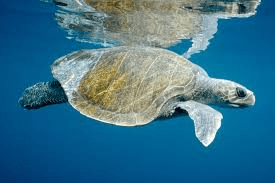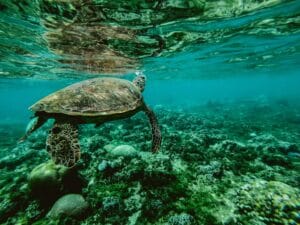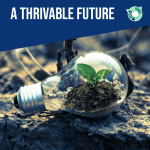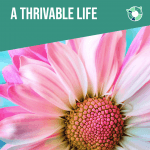Introduction to smart lighting for turtle navigation
SDG7 is a global issue concerning sustainable, affordable, and clean energy. Science and technology are useful tools for improving energy usage, allowing progress towards this goal. THRIVE Project’s Foundational Focus Factors of science-based targets and a strong emphasis on sustainability and beyond are key. These factors help promote better outcomes in areas of importance surrounding the earth’s future. In the case of sea turtles, it relates to the significant issue surrounding the use of artificial lighting in coastal areas affecting the navigation of turtle hatchlings. This is a particular concern in areas with nesting beaches during breeding season. This article will discuss how smart lighting can aid in reducing the impact of this issue.

Source: Ocean bites
Sea Turtles
There are seven sea turtle species worldwide and six rely on Australian beaches to lay eggs. Furthermore, all seven species are listed as endangered or vulnerable under the Nature Conservation Act 1992 (NCA). Beaches from Queensland to Northwestern Australia are important breeding grounds, including offshore islands. The Olive Ridley and Hawksbill turtles are known to only breed on a few beaches worldwide, making these key areas for their survival in Australia. Adult female turtles prefer laying is required eggs on dark beaches and are known to avoid areas with high levels of artificial lighting. If a suitable nest location cannot be found to lay eggs, the female will instead eject them into the ocean.

Source Fitzroy Basin Association

Source: NOAA
Sea turtle hatchlings use the reflection of the moon on the ocean to guide them to the water. Artificial lights disorientate the hatchlings and lead them in the wrong direction. SDG9 (Industry, Innovation and Infrastructure) and SDG11 (Sustainable Cities) are also relevant as the innovation of smart lighting can significantly reduce power costs associated with public infrastructure. This article will explore how smart lighting has uses in enhancing the navigation of sea turtle hatchlings and improve their survival rates.
Understanding Turtle Navigation
Sea turtles are under threat. Increasing levels of plastic pollution, predators, climate change, and increasing human encroachment into nesting areas are significant issues. The main problem, however, continues to be artificial lighting affecting nesting. Sea turtles can see up to 20 kilometres away and artificial lighting interferes with their instincts and navigation. Sea turtles return to their beach of birth to lay eggs, making specific beaches nesting hotspots. Currently, the rate of sea turtle hatchlings who survive to adulthood is approximately 1 in 1000. Significant future effort will ensure hatchling survival rates improve.
Turtles remember their beach of birth and return as adults to lay eggs. They prefer the beach to be dark with little human activity before laying eggs. It then takes two months for the eggs to hatch and the young must navigate to the ocean. The hatchlings often mistake artificial lights for the moon and move away from the ocean. The result is fatal as the turtles can die from vehicle strikes, dehydration, and exhaustion.
The Role of Smart Lighting in Turtle Navigation
Smart lighting uses sensors to detect human activity, weather patterns, and sunrise/sunset. Reductions in levels of light pollution are a solution that will help the survival rates of turtle hatchlings. For example, street lights set on timers can correlate with times of greater traffic. If turning off streetlights is unsafe, dimmers might be a viable alternative.
As a health and safety issue, it is not advisable to completely remove streetlights. The innovation of smart lighting can therefore be a safe compromise between public safety and environmental needs. The installation of smart sensors can also provide control over the maintenance of the infrastructure and allow for a longer lifespan of the lighting fixture and components, reducing labour and maintenance costs.
The Effect of Red Light on Turtles
Altering the colour of street lights was previously touted as a solution and has yielded some positive results. Research is ongoing but shows that different turtle species react differently to the light spectrum. The use of red or orange light improves the issue for some sea turtle species such as the Leatherback turtle who appears indifferent to red light. Conversely, Green turtles appear alarmed and retreat from the red-tone light. Research has also shown that Flatback turtles appear affected by orange light to a lesser degree. The remote mining town of Port Hedland utilises such lights. It is an important breeding ground for flatback turtles and efforts show minimised disorientation although more work needs to be done to stop turtles heading in the wrong direction.
With smart lighting already utilised in many locations to some extent, further utilisation is possible to create a more optimal environment for turtles during the nesting and hatching season. The implementation of smart lighting will result in reduced turtle deaths owing to disorientation and accidental misdirection. Hatchlings will be less confused and will head to the ocean during the breeding season, resulting in an increased survival rate and a better outlook for the species.
Case Study: Nesting on Buddina Beach
A prime example is Buddina Beach on the Sunshine Coast. The number of nesting turtles was severely declining, resulting in fewer nests and hatchlings. Measures were taken to increase the number of turtles coming to lay eggs on the beach. The council and local community groups collaborated to raise public awareness of the issues surrounding turtle nesting. They focused on reducing the light emanating from high-rise apartments, streetlights, and headlights. The local council installed motion-activated lights, reflective signage, and shields to block light shining on the beach. Action from residents has led to reduced glare from nearby buildings, whilst signs encourage restricted use of headlights when not on the road at night.
Installing motion-activated streetlights led to darker beaches and a subsequent rise in turtle nesting numbers. The result is an increase from one or two hatchlings per year, to over 30. This also equated to a reduction in the number of dead hatchlings found.
The benefits don’t sit solely with the animals. Reducing light usage results in an electricity bill reduction of up to 40%. Switching to less energy-intensive lighting can save households money while not compromising on lifestyle.
smart lighting for turtle navigation: Conclusion
Turtles are suffering from the continued use of artificial lighting on beaches and adjacent streets. Thankfully, the implementation of smart lighting for turtle navigation reduces this negative impact. Smart lighting systems can benefit turtles with little impact on the lives of humans. Cases indicate that when people are aware of issues regarding turtle navigation, they alter their behaviour to aid the turtles. Implementing a smart system can reduce light pollution, improve environmental conditions, aid in the recovery of biodiversity, and contribute to coastal environmental efforts.
Engaging the Community and Stakeholders
Communities and not-for-profit groups can educate the general public and advocate for the installation of smart lighting in relevant areas. This would result in an informed community, improved environmental relations, and encourage more communities to follow suit.
There are many ways that individuals can contribute to helping turtles. Encouraging councils to invest in smart lighting will lead to a reduction in energy consumption, improving the outlook on climate change. Households can switch to low-intensity lighting, turn off all unnecessary lights, and try to be as sustainable as possible through the reduce, reuse, and recycle philosophy.
Link to the United Nations Sustainable Development Goals (SDG’s) and smart lighting for turtle navigation
Work towards the UN’s Sustainable Development Goals (SDG’s) is essential in mitigating climate change and protecting the environment. Many SDG’s are significant to the issue of turtle hatchling survival and must be worked towards to ensure a healthy future for all turtles. Information on the SDG’s is sourced from the United Nations (UN). The achievement of these goals is imperative for the survivability of our planet.
Call to action (CTA)
People living alongside, or visiting, a beach should be aware of the issues surrounding artificial lighting and aim towards reducing their impact. Turning off lights when not necessary and using a dim setting where possible are great ways to reduce the impact of light pollution. Councils with turtle nesting beaches must invest in better lighting solutions. This will also enable turtles to become a major tourist attraction and it shows the Council’s commitment to sustainability.
A Thrivable Framework
THRIVE Project is a not-for-profit organisation committed to working towards a future that is not just sustainable but thrivable. Thrivability extends beyond net zero to where the emissions mitigation actions are greater than emission levels, creating a nature positive world. The 12 Foundation Focus Factors (FFFs) are guidelines by which we measure our progress towards thrivability. For Turtle navigation Strong Sustainability is key, which shows that with a drop in breeding success, there is a subsequent drop in sustainability, hindering progress to thrivability. Strong sustainability is important for ensuring animals thrive in the future.
Science-Based Targets are another key FFF, offering a means to track progress towards sustainability and thrivability. An example of this is setting targets to which light emission levels should fall. Tracking increases in breeding success and hatchling numbers is done through nest and hatchling counts and serves as an important source for measuring success. THRIVE has monthly webinars, newsletters, podcasts, and blog posts which help shed light on what you can do to become more thrivable and reduce your impact on the environment. Check out the website to find how you can join THRIVE.























